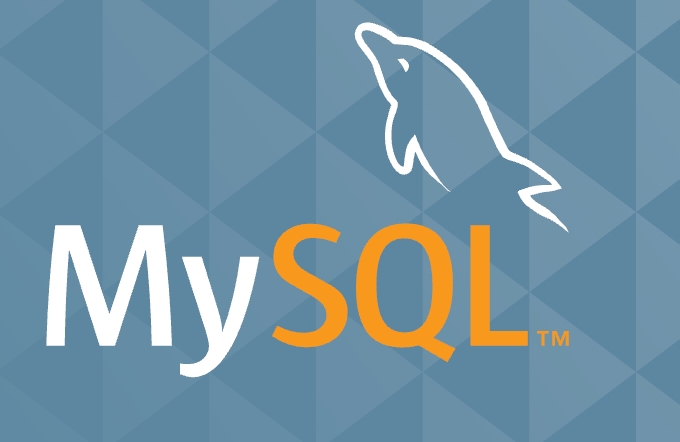MySQL database cloning can be implemented in four ways. 1. Use mysqldump for logical cloning, export SQL scripts and import the target database, suitable for small databases and support exclusion of tables and compressed transmission; 2. Use file system snapshots for physical cloning, suitable for large databases, freezing instances, creating snapshots and copying files, requiring the source to be consistent with the target configuration; 3. Set up a continuous cloning environment through replication, configure master-slave replication to achieve data synchronization, suitable for scenarios that require real-time updates; 4. Automate cloning in the CI/CD pipeline, use scripts, Docker or tools to integrate automation processes, and it is recommended to regularly clean up, data desensitize, and naming specifications.

Cloning a MySQL database is a common task in DevOps workflows, especially when you need to replicate production environments for development, testing, or staging. It helps teams catch bugs early, test changes safely, and speed up the development cycle. The key is to do it efficiently without disrupting live systems or wasting resources.

Here's how to implement MySQL database cloning effectively in a DevOps context.
1. Use Logical Cloning with mysqldump
This is the most straightforward and widely used method. mysqldump generates a SQL script that contains the database schema and data, which you can then import into another database.

How to do it:
- Dump the source database:
mysqldump -u [username] -p [database_name] > backup.sql
- Create a new database on the target server:
CREATE DATABASE new_database;
- Import the dump:
mysql -u [username] -p new_database < backup.sql
Tips:

- Exclude large tables that aren't needed in dev or test environments using
--ignore-table. - Add
--single-transactionto avoid locking tables during the dump. - Compress the file on the fly with
gzipif transferring over the network:mysqldump ... | gzip > backup.sql.gz
2. Set Up a Physical Clone with File System Snapshots
For larger databases where speed and minimum downtime are critical, using file system snapshots (like LVM or ZFS) can be a better option.
How it works:
- Freeze the MySQL instance (eg, with
FLUSH TABLES WITH READ LOCK). - Take a snapshot of the data directory.
- Release the lock.
- Mount the snapshot and copy the files to the target location.
Use cases:
- When you need a near-instant copy of a multi-GB or TB-sized database.
- For backup and recovery scenarios where speed matters.
Important:
- Ensure the MySQL version and configuration match between the source and target.
- This method requires deeper system-level access and understanding.
3. Clone Using Replication (for Continuous Dev Environments)
If your development or staging environments need to stay in sync with production, setting up replication can be a good approach.
Steps:
- Configure the source database as a replication master.
- Set up a new MySQL instance as a slave.
- Let it replicate the data in real time or on a schedule.
Why it's useful:
- You get a continuously updated clone.
- You can pause replication to make changes without affecting the source.
Caveats:
- Be cautious with auto-increment values and unique keys.
- Always filter out system databases or unnecessary tables using
replicate-wild-ignore-table.
4. Automate Cloning in CI/CD Pipelines
To integrate cloning into DevOps pipelines, wrap the process in scripts or tools that can be triggered automatically.
Options:
- Use Bash or Python scripts that handle dumping, transferring, and importing.
- Integrate with Docker to spin up fresh clones in containers.
- Use tools like Ansible or Terraform for infrastructure as code.
Best practices:
- Clean up old clones regularly to avoid clutter.
- Mask or anonymize sensitive data before importing into non-production environments.
- Add a prefix or suffix to cloned database names for clarity (eg,
prod_clone_20250405).
Cloning a MySQL database doesn't have to be complicated. Whether you're using mysqldump , file snapshots, replication, or automation tools, the right method depends on your data size, environment needs, and available resources. Just remember to keep things clean, secure, and consistency.
The above is the detailed content of Implementing MySQL Database Cloning for DevOps. For more information, please follow other related articles on the PHP Chinese website!

Hot AI Tools

Undress AI Tool
Undress images for free

Undresser.AI Undress
AI-powered app for creating realistic nude photos

AI Clothes Remover
Online AI tool for removing clothes from photos.

Clothoff.io
AI clothes remover

Video Face Swap
Swap faces in any video effortlessly with our completely free AI face swap tool!

Hot Article

Hot Tools

Notepad++7.3.1
Easy-to-use and free code editor

SublimeText3 Chinese version
Chinese version, very easy to use

Zend Studio 13.0.1
Powerful PHP integrated development environment

Dreamweaver CS6
Visual web development tools

SublimeText3 Mac version
God-level code editing software (SublimeText3)

Hot Topics
 Establishing secure remote connections to a MySQL server
Jul 04, 2025 am 01:44 AM
Establishing secure remote connections to a MySQL server
Jul 04, 2025 am 01:44 AM
TosecurelyconnecttoaremoteMySQLserver,useSSHtunneling,configureMySQLforremoteaccess,setfirewallrules,andconsiderSSLencryption.First,establishanSSHtunnelwithssh-L3307:localhost:3306user@remote-server-Nandconnectviamysql-h127.0.0.1-P3307.Second,editMyS
 Analyzing the MySQL Slow Query Log to Find Performance Bottlenecks
Jul 04, 2025 am 02:46 AM
Analyzing the MySQL Slow Query Log to Find Performance Bottlenecks
Jul 04, 2025 am 02:46 AM
Turn on MySQL slow query logs and analyze locationable performance issues. 1. Edit the configuration file or dynamically set slow_query_log and long_query_time; 2. The log contains key fields such as Query_time, Lock_time, Rows_examined to assist in judging efficiency bottlenecks; 3. Use mysqldumpslow or pt-query-digest tools to efficiently analyze logs; 4. Optimization suggestions include adding indexes, avoiding SELECT*, splitting complex queries, etc. For example, adding an index to user_id can significantly reduce the number of scanned rows and improve query efficiency.
 Performing logical backups using mysqldump in MySQL
Jul 06, 2025 am 02:55 AM
Performing logical backups using mysqldump in MySQL
Jul 06, 2025 am 02:55 AM
mysqldump is a common tool for performing logical backups of MySQL databases. It generates SQL files containing CREATE and INSERT statements to rebuild the database. 1. It does not back up the original file, but converts the database structure and content into portable SQL commands; 2. It is suitable for small databases or selective recovery, and is not suitable for fast recovery of TB-level data; 3. Common options include --single-transaction, --databases, --all-databases, --routines, etc.; 4. Use mysql command to import during recovery, and can turn off foreign key checks to improve speed; 5. It is recommended to test backup regularly, use compression, and automatic adjustment.
 Handling NULL Values in MySQL Columns and Queries
Jul 05, 2025 am 02:46 AM
Handling NULL Values in MySQL Columns and Queries
Jul 05, 2025 am 02:46 AM
When handling NULL values ??in MySQL, please note: 1. When designing the table, the key fields are set to NOTNULL, and optional fields are allowed NULL; 2. ISNULL or ISNOTNULL must be used with = or !=; 3. IFNULL or COALESCE functions can be used to replace the display default values; 4. Be cautious when using NULL values ??directly when inserting or updating, and pay attention to the data source and ORM framework processing methods. NULL represents an unknown value and does not equal any value, including itself. Therefore, be careful when querying, counting, and connecting tables to avoid missing data or logical errors. Rational use of functions and constraints can effectively reduce interference caused by NULL.
 Calculating Database and Table Sizes in MySQL
Jul 06, 2025 am 02:41 AM
Calculating Database and Table Sizes in MySQL
Jul 06, 2025 am 02:41 AM
To view the size of the MySQL database and table, you can query the information_schema directly or use the command line tool. 1. Check the entire database size: Execute the SQL statement SELECTtable_schemaAS'Database',SUM(data_length index_length)/1024/1024AS'Size(MB)'FROMinformation_schema.tablesGROUPBYtable_schema; you can get the total size of all databases, or add WHERE conditions to limit the specific database; 2. Check the single table size: use SELECTta
 Handling character sets and collations issues in MySQL
Jul 08, 2025 am 02:51 AM
Handling character sets and collations issues in MySQL
Jul 08, 2025 am 02:51 AM
Character set and sorting rules issues are common when cross-platform migration or multi-person development, resulting in garbled code or inconsistent query. There are three core solutions: First, check and unify the character set of database, table, and fields to utf8mb4, view through SHOWCREATEDATABASE/TABLE, and modify it with ALTER statement; second, specify the utf8mb4 character set when the client connects, and set it in connection parameters or execute SETNAMES; third, select the sorting rules reasonably, and recommend using utf8mb4_unicode_ci to ensure the accuracy of comparison and sorting, and specify or modify it through ALTER when building the library and table.
 Aggregating data with GROUP BY and HAVING clauses in MySQL
Jul 05, 2025 am 02:42 AM
Aggregating data with GROUP BY and HAVING clauses in MySQL
Jul 05, 2025 am 02:42 AM
GROUPBY is used to group data by field and perform aggregation operations, and HAVING is used to filter the results after grouping. For example, using GROUPBYcustomer_id can calculate the total consumption amount of each customer; using HAVING can filter out customers with a total consumption of more than 1,000. The non-aggregated fields after SELECT must appear in GROUPBY, and HAVING can be conditionally filtered using an alias or original expressions. Common techniques include counting the number of each group, grouping multiple fields, and filtering with multiple conditions.
 Implementing Transactions and Understanding ACID Properties in MySQL
Jul 08, 2025 am 02:50 AM
Implementing Transactions and Understanding ACID Properties in MySQL
Jul 08, 2025 am 02:50 AM
MySQL supports transaction processing, and uses the InnoDB storage engine to ensure data consistency and integrity. 1. Transactions are a set of SQL operations, either all succeed or all fail to roll back; 2. ACID attributes include atomicity, consistency, isolation and persistence; 3. The statements that manually control transactions are STARTTRANSACTION, COMMIT and ROLLBACK; 4. The four isolation levels include read not committed, read submitted, repeatable read and serialization; 5. Use transactions correctly to avoid long-term operation, turn off automatic commits, and reasonably handle locks and exceptions. Through these mechanisms, MySQL can achieve high reliability and concurrent control.






